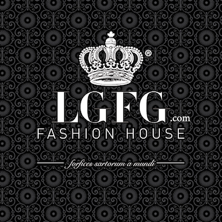Mixing patterns and matching colours
Last week, we went over the seven major style sins, two of which are mismatching patterns and colours. While colour or patterns can enhance a beautifully custom tailored suit or casual look, they can also detract from your look or worse, make you appear as if you got dressed in the dark.

Happy together
Opinions may vary from one style expert to another, but the consensus is there are four ways to combine patterns (using variables such as a jacket, pair of pants, shirt and tie).
Some simple tips for combining patterns:
- 3 solids: Yes, a solid is a ‘type’ of pattern. Mixing three solids is the safest alternative, but only if you have the ability to mix and match colours appropriately. For help on this, see the Matching Colours section below.
- 2 solids + 1 pattern: Another safe way to go – mixing two solids and one pattern (for example, black pants + gray shirt + striped tie). When choosing this option, just beware of mixing soft and loud colors – see Matching Colours below.
- 2 patterns + 1 solid: The key to mixing two patterns is to avoid wearing two patterns that are of the same size. Another key is that both patterns should have at least one common colour to help pull them together.
- 3 patterns: The most challenging of all, this is not for everyone. For this look to be successful you need to have a great eye and two of the patterns need to be similar—for example, two checks, of different size, and one stripe. Or you could wear two stripes, of different size, and one small plaid or checkered pattern.
See a pattern here? The above should help you to match various patterns.
LGFG Fashion House offers custom tailored business suits. Hand tailored and delivered to your office.
A Beautiful Union
Understanding colour theory and how colours work together can help you expand your closet and make better buying decisions.
In visual experiences, harmony is something that is pleasing to the eye. It engages the viewer and it creates an inner sense of order, a balance in the visual experience. When something is not harmonious, it’s either boring or chaotic. At one extreme is a visual experience that is so bland that the viewer is not engaged. The human brain will reject under-stimulating information. At the other extreme is a visual experience that is so overdone, so chaotic that the viewer can’t stand to look at it. The human brain rejects what it cannot organize, what it cannot understand. The visual task requires that we present a logical structure. Color harmony delivers visual interest and a sense of order.
In summary, extreme unity leads to under-stimulation while extreme complexity leads to over-stimulation. Harmony is a dynamic equilibrium.
Some Formulas for Color Harmony
There are many theories for harmony. The following descriptions present some basic formulas.
Analogous colors are any three colors that are side-by-side on a 12-part color wheel, such as yellow-green, yellow, and yellow-orange. Usually one of the three colors predominates.
Complementary colors are any two colors directly opposite each other, such as red and green and red-purple and yellow-green. In the illustration above, there are several variations of yellow-green in the leaves and several variations of red-purple in the orchid. These opposing colors create maximum contrast and maximum stability.
(Source: http://www.colormatters.com/color-and-design/basic-color-theory)
How to translate this information into help for your wardrobe?
When in doubt, choose a white shirt. White goes with everything… even white! White is not considered a colour, nor is black – notice they are not on the wheel.
- Like bright colours? To tone them down, combine them with gray or brown to mute loud colours. Gray works well with black, charcoal, blues, burgundy, and reds, while brown will tone down yellows, oranges, greens and blues.
- Choose colors to complement your skin tone and hair color—you can usually tell what looks good if you receive compliments when wearing a particular colour, or you feel good while you’re wearing it.
- Factor your skin tone into the equation. Certain colours work better during different seasons. White, yellow, beige, off-white, etc. may make you look sallow or washed-out during winter but when summer hits and you’re sporting a bit of a tan, those same colours may look great on you.
- Your hair colour should fit into the equation—some hair colors look better with certain colours than with others. Redheads look good in shades of purple, green, brown and rust, while black hair is complemented by tones of navy, red, blues, and greens. Play around and see what works best for you. If in doubt, ask a good friend.
Put a copy of a color wheel on your closet door for quick and easy reference.
General Rule: Less is always more—the simpler your clothing, the less likely you are to commit a style sin and have to face the Fashion Police.
LGFG Fashion House creates custom tailored, men’s suits. Highest quality and hand delivered.






